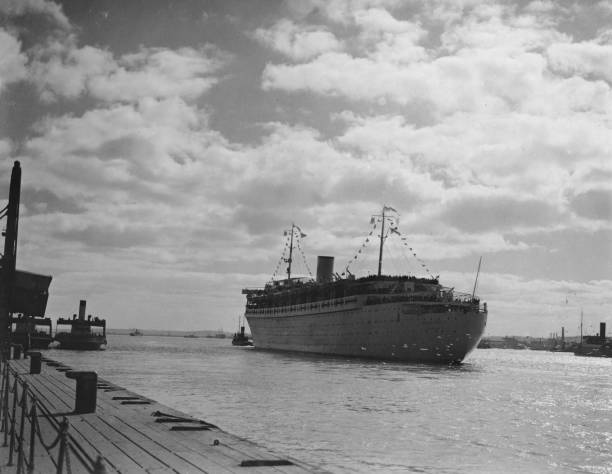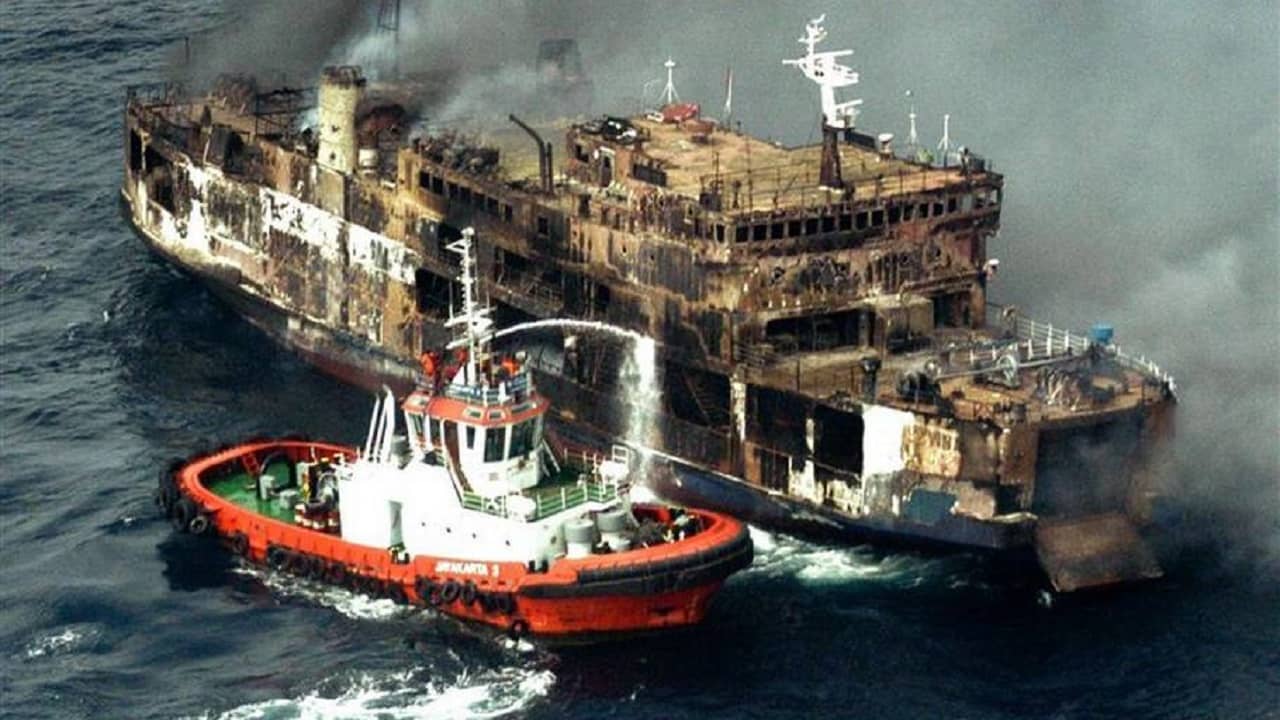History of Jewish Migration and Return to the Land of Israel
The history of Jewish migration and return to the land of Israel is a tale of dispersal, perseverance, and determination.
Loading...

Documental picture of the Titanic at the Titanic Belfast, a visitor attraction dedicated to the ship which sank in 1912. Photo by The Print Collector/Heritage Images via Getty Images
The Titanic continues to fascinate people even after more than a century of its sinking. While over 1,500 people died when Titanic sunk, it was not the worst ship disaster of all times — it was not even close.
The grandeur of Titanic along with the scale of tragedy —over 1,500 dead— add to the fascination. If interest would have faded with time, filmmaker James Cameron ensured it would not happen. In 1997, he made a blockbuster film that etched thet tragedy in popular psyche with stunning visuals and music.
Despite Titanic's hold over the popular psyche, it is not the worst ship disaster. It's not even close. While over 1,500 people died in the Titanic disaster, around 9,000 were killed in the worst ship disaster ever.
Here we list five of the worst ship disasters of the 19-20th centuries.
Table of contents [Show]

Photo by A. Hudson/Topical Press Agency
MV Wilhelm Gustloff was a German ship that sunk in 1945 during World War II. Around 9,000 people were killed.
On January 30, 1945, MV Wilhelm Gustloff left Gotenhafen (now Gdynia, Poland) with around 10,000 people onboard against the capacity of 1,900, according to The Britannica Encyclopaedia, which noted that the presence of soldiers and anti-aircraft guns on the ships made it a military target.
That day itself, a Soviet submarine fired torpedoes at the ship that hit it. The ship sunk from the torpedo attack and though the rescue efforts began soon, only around 1,000 could be saved and around 9,000 were killed. It is worst ship disaster ever.
The passenger ferry MV Doña Paz collided with oil tanker MT Vector in the Tablas Strait off the coast of the Phillipeans in 1987. Over 4,000 were killed.

The disaster took place around 110 miles (180 km) south of Manila, the capital of the Phillipeans, according to Britannica.
"The collision ignited the 8,800 barrels of oil and gasoline on the Vector, and both ships were quickly engulfed in the blaze. Of the more than 4,400 passengers and crew on both ships, just 26 people were rescued from the oil-slicked waters," says Britannica.
RMS Lusitania was sunk by the Germans during the World War I in 1915. It killed 1,198 passengers.
The sinking of RMS Lusitania, and the death of 128 Americans among its passengers, has since been understood be one of the reasons that pushed the United States to join the war 1.
RMS Lusitania was considered a genuine military targeted and was hit by a German submarine. It sunk in just 18 minutes, according to Britannica.
"The sinking of the Lusitania was not the single largest factor contributing to the entrance of the United States into the war two years later, but it certainly solidified the public's opinions towards Germany...Many, though, consider the sinking a turning point—technologically, ideologically, and strategically—in the history of modern warfare, signaling the end of the 'gentlemanly' war practices of the nineteenth century and the beginning of a more ominous and vicious era of total warfare," notes an article published by the Library of Congress.
The Britannica calls it the worst maritime disaster in the US history. It occured in 1865 and killed around 1,800 people.
The SS Sultana was carrying the returning prisoners of war after the end of the end of the American Civil War when it sunk. It was carrying passengers six-times above its capacity.
The Britannica noted that the government paid ship operators handsomely at the time to repatriate prisoners of war and there was corruption in the dealings.
#CivilWar April 27, 1865 2:00 am: Worst sinking in US history: overloaded #USCivilWar steamer SS Sultana's 4 boilers explode. Capacity: 376 passengers but 2,137 aboard. Ships burns and sinks 4 miles NW of I-40 Memphis, TN. 1,547 killed. #shipspotting #USNavy pic.twitter.com/QolbqyCk4S
— USAS - Historian, Traveler, Planet Earth Advocate! (@USAS_WW1) March 30, 2023
"In the case of the Sultana, that meant cutting corners on the repair of a leaky boiler and carrying as many as 2,300 people—more than six times the vessel’s rated capacity. When the overtaxed boiler ruptured, hundreds were killed in the initial explosion, and more were trapped when the overloaded decks collapsed," says Britannica.
The SS Kiangya disaster during the Chinese Civil War killed around 4,000 people in 1948. It was carrying war refugees.
The Time magazine noted that the ship sunk after it likely hit a mine that was placed during World War II.
The disaster took place around 80 kms from Shanghai. While around 4,000 were killed, around 1,000 were rescued.
Passionate educator and journalist, inspiring minds and uncovering stories worldwide
The history of Jewish migration and return to the land of Israel is a tale of dispersal, perseverance, and determination.
In 1958, the United States initiated a series of nuclear tests known as Operation Hardtack I. This comprehensive test program aimed to evaluate the effects of nuclear weapons across various environments, including the atmosphere, underwater, and underground.
